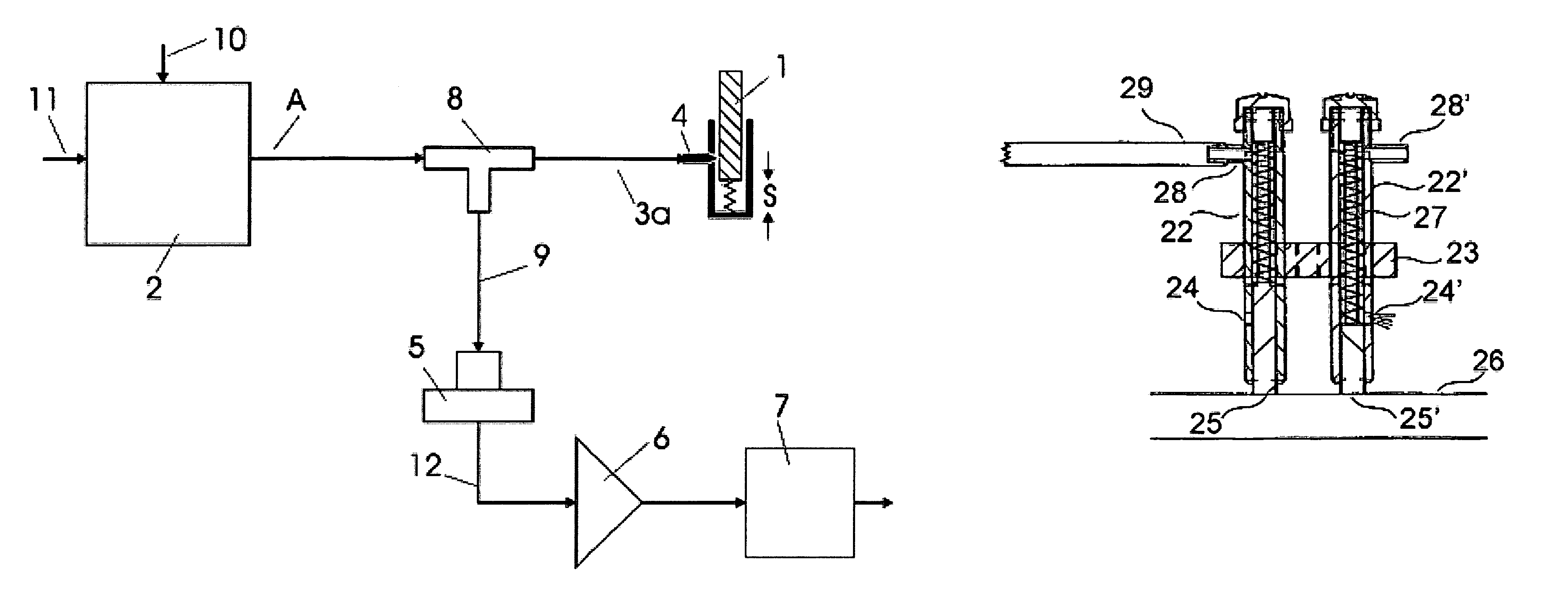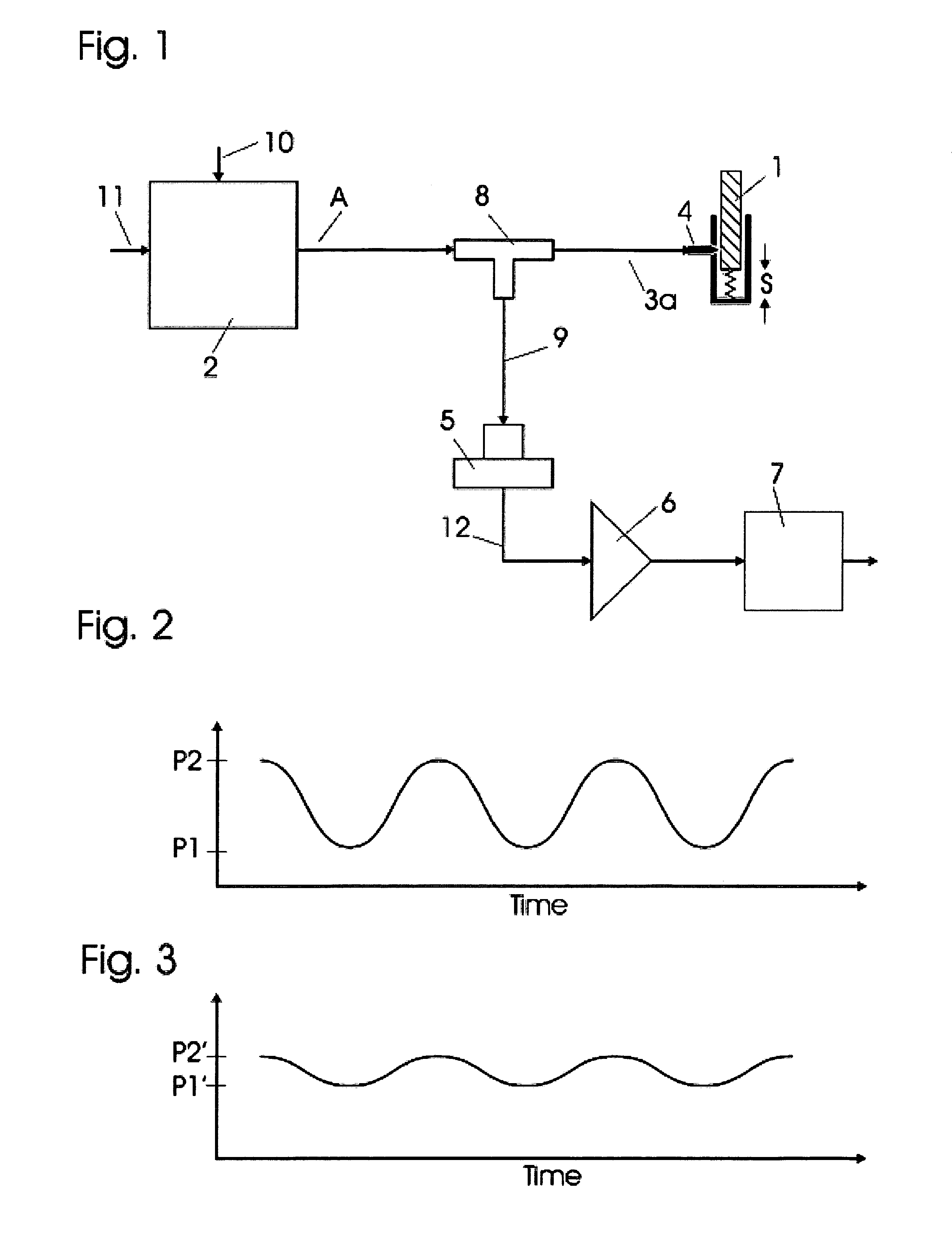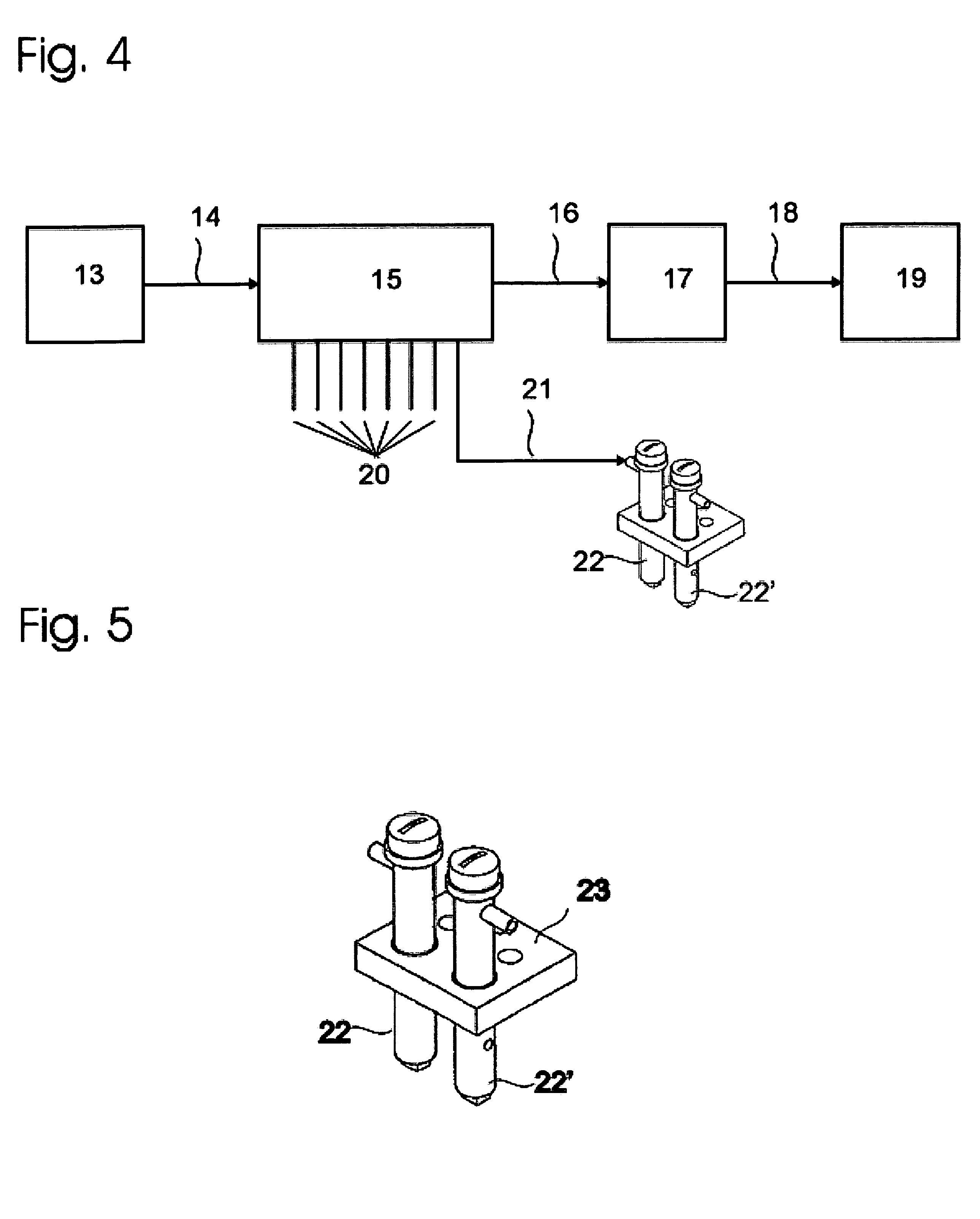Device and method for measuring mechanical path lengths by means of pneumatic pressure, in particular for sliding carbon contacts
a technology of mechanical path length and pneumatic pressure, which is applied in the direction of rotary current collectors, structural/machine measurement, instruments, etc., can solve the problems of destroying sliding contact tracks, detecting progressive wear of brushes, and interrupting contact, so as to achieve high electrical insulation
- Summary
- Abstract
- Description
- Claims
- Application Information
AI Technical Summary
Benefits of technology
Problems solved by technology
Method used
Image
Examples
Embodiment Construction
[0040]In the device according to the first aspect of the invention as shown in FIG. 1, a non-contacting measurement of a length or a path is performed by means of a pulsating air current. A pump 2, preferably driven by an electric motor connected to an electrical supply line 10 and operated at 24 V d.c., or by any other power source, takes in air through an air intake 11 and generates a pulsating air pressure. Of course, any other suitable gas such as nitrogen or an insulating inert gas may be used. Pumps for producing the air pressure changes may be piston pumps, diaphragm pumps particularly having a piezo diaphragm, or other pumps of known type. It is essential to the invention that the pump produce a defined fluctuating preferably an oscillating air pressure at its outlet to a pressurized air line 3. FIG. 2 shows fluctuations of pressure between values P1 and P2 at a pump outlet in the line 3. Optionally, the pressure value may fluctuate in a positive direction, for example from ...
PUM
 Login to View More
Login to View More Abstract
Description
Claims
Application Information
 Login to View More
Login to View More - R&D
- Intellectual Property
- Life Sciences
- Materials
- Tech Scout
- Unparalleled Data Quality
- Higher Quality Content
- 60% Fewer Hallucinations
Browse by: Latest US Patents, China's latest patents, Technical Efficacy Thesaurus, Application Domain, Technology Topic, Popular Technical Reports.
© 2025 PatSnap. All rights reserved.Legal|Privacy policy|Modern Slavery Act Transparency Statement|Sitemap|About US| Contact US: help@patsnap.com



